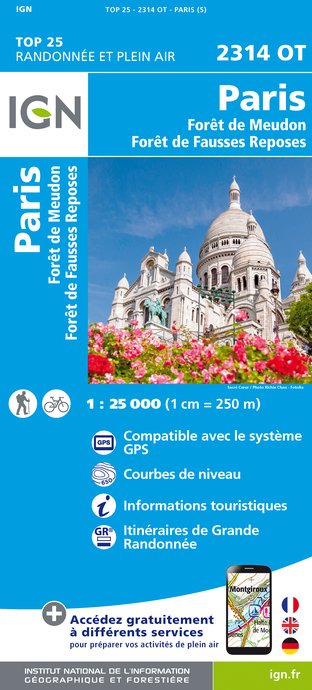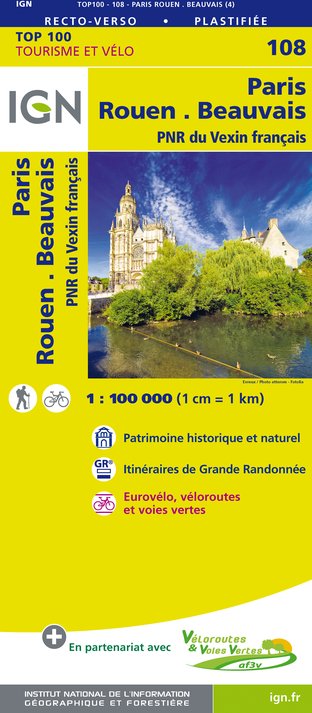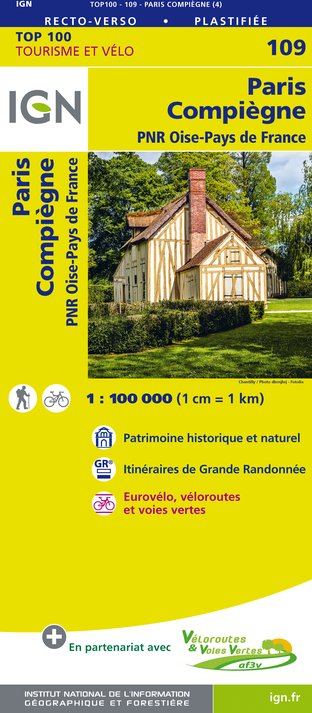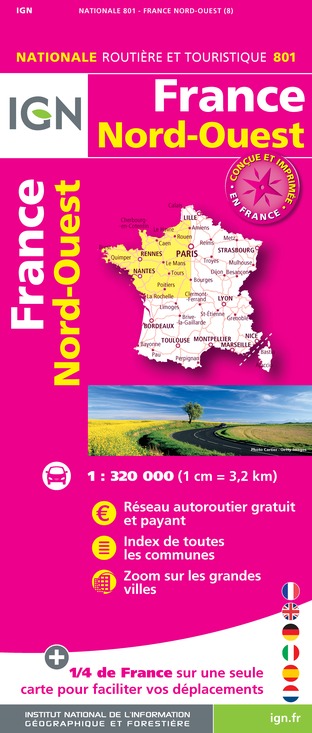警报
警报
练习类型
船
徒步
自行车
Presentation
地图
兴趣点
Cirkwi 简报
评级和评论
周围的看点
在巴托布斯上的巴黎



信用 : Batobus
Cirkwi 简报
通过水路探索巴黎:发现Batobus路线
由Balades Fluviales Fabienne Lemoine Fondateur精心策划的Batobus之旅,让您在塞纳河上滑行时体验巴黎风情。放弃繁忙的城市旅游,选择安静的河上交通,连接标志性景点。这次旅行穿越巴黎的心脏,从雄伟的埃菲尔铁塔到文化灯塔特罗卡代罗,邀请您观察巴黎的建筑奇迹和河流的律动——一个为那些渴望在宁静中探索城市精髓的人打造的叙事。
技术行程洞察
完整的行程跨越9.8公里,海拔高度轻微波动,介于27到30米之间。旅程中几乎没有上下坡,只有11米的微小高差,使其变得非常平坦。这些数据突显了一个适合各个年龄游客的、便于休闲探索巴黎风景线和建筑珍品的路径,无需过多身体劳累。
Batobus之旅的季节贴士
无论季节如何,Batobus之旅都令人陶醉。然而,春季和秋季的天气温和,适合悠闲地在码头漫步。夏季游客应注意防晒和水份补给,因为在阳光下,河流的魅力最为明亮。冬季旅客应保暖着装,确保寒冷不会减损巴黎的夜晚美景。安全起见,请时刻注意周围环境,并遵循船员的指示,尤其是登船或下船时。
巴黎,法国文化和历史之城
巴黎不仅是法国的首都,也是一个对全球文化、艺术和政治产生影响的历史画卷。它位于法兰西岛大区内,它的塞纳河岸见证了从法国大革命到开创性世界博览会的重要时刻。这个具有自由、创造力和韧性的城市在塞纳河上富丽堂皇地展示着,见证着胜利、悲剧和变革的故事。
了解巴黎的气候对旅行者来说
巴黎的气候温和,冬季温暖,夏季宜人。全年降雨均匀,冬季偶有降雪。从气候角度来看,最佳的Batobus之旅时间将是晚春到初秋(5月至9月),天气最适合观光和在露天甲板上欣赏风景,降雨干扰最小,舒适的温度范围便于延长对河岸和附近地标的探索。
由Balades Fluviales Fabienne Lemoine Fondateur精心策划的Batobus之旅,让您在塞纳河上滑行时体验巴黎风情。放弃繁忙的城市旅游,选择安静的河上交通,连接标志性景点。这次旅行穿越巴黎的心脏,从雄伟的埃菲尔铁塔到文化灯塔特罗卡代罗,邀请您观察巴黎的建筑奇迹和河流的律动——一个为那些渴望在宁静中探索城市精髓的人打造的叙事。
技术行程洞察
完整的行程跨越9.8公里,海拔高度轻微波动,介于27到30米之间。旅程中几乎没有上下坡,只有11米的微小高差,使其变得非常平坦。这些数据突显了一个适合各个年龄游客的、便于休闲探索巴黎风景线和建筑珍品的路径,无需过多身体劳累。
Batobus之旅的季节贴士
无论季节如何,Batobus之旅都令人陶醉。然而,春季和秋季的天气温和,适合悠闲地在码头漫步。夏季游客应注意防晒和水份补给,因为在阳光下,河流的魅力最为明亮。冬季旅客应保暖着装,确保寒冷不会减损巴黎的夜晚美景。安全起见,请时刻注意周围环境,并遵循船员的指示,尤其是登船或下船时。
巴黎,法国文化和历史之城
巴黎不仅是法国的首都,也是一个对全球文化、艺术和政治产生影响的历史画卷。它位于法兰西岛大区内,它的塞纳河岸见证了从法国大革命到开创性世界博览会的重要时刻。这个具有自由、创造力和韧性的城市在塞纳河上富丽堂皇地展示着,见证着胜利、悲剧和变革的故事。
了解巴黎的气候对旅行者来说
巴黎的气候温和,冬季温暖,夏季宜人。全年降雨均匀,冬季偶有降雪。从气候角度来看,最佳的Batobus之旅时间将是晚春到初秋(5月至9月),天气最适合观光和在露天甲板上欣赏风景,降雨干扰最小,舒适的温度范围便于延长对河岸和附近地标的探索。
自动生成。
IGN 地图

2314OT - PARIS FORÊT DE MEUDON FORÊT DE FAUSSES REPOSES
编辑器 : IGN
收藏 : TOP 25 ET SÉRIE BLEUE
梯子 : 1:25 000
13.90€

190 PARIS CHANTILLY FONTAINEBLEAU
编辑器 : IGN
收藏 : TOP 100
梯子 : 1:100 000
8.40€

118 PARIS CHARTRES PNR DE LA HAUTE VALLÉE DE CHEVREUSE
编辑器 : IGN
收藏 : TOP 100
梯子 : 1:100 000
8.40€

108 PARIS ROUEN BEAUVAIS PNR DU VEXIN FRANÇAIS
编辑器 : IGN
收藏 : TOP 100
梯子 : 1:100 000
8.40€

109 PARIS COMPIÈGNE PNR OISE-PAYS DE FRANCE
编辑器 : IGN
收藏 : TOP 100
梯子 : 1:100 000
8.40€

D75-95 ÎLE-DE-FRANCE OUEST
编辑器 : IGN
收藏 : CARTES DÉPARTEMENTALES IGN
梯子 : 1:150 000
5.90€

D77 SEINE-ET-MARNE
编辑器 : IGN
收藏 : CARTES DÉPARTEMENTALES IGN
梯子 : 1:150 000
5.90€

D28 EURE-ET-LOIR
编辑器 : IGN
收藏 : CARTES DÉPARTEMENTALES IGN
梯子 : 1:150 000
5.90€

NR01 HAUTS-DE-FRANCE
编辑器 : IGN
收藏 : CARTES RÉGIONALES IGN
梯子 : 1:250 000
6.80€

NR08 CENTRE-VAL DE LOIRE
编辑器 : IGN
收藏 : CARTES RÉGIONALES IGN
梯子 : 1:250 000
6.80€

NR03 ÍLE DE FRANCE
编辑器 : IGN
收藏 : CARTES RÉGIONALES IGN
梯子 : 1:250 000
6.80€

801 FRANCE NORD OUEST
编辑器 : IGN
收藏 : CARTES NATIONALES IGN
梯子 : 1:320 000
6.10€

EUROPE
编辑器 : IGN
收藏 : DÉCOUVERTE DES PAYS DU MONDE IGN
梯子 : 1:2 500 000
7.00€
技术信息
船
难度
未指定
距离
9.9 km
练习类型
船
徒步
自行车
显示更多信息
高程剖面
起点
75007
Paris
Lat : 48.861687Lng : 2.295842
兴趣点
数据作者
评级和评论
周围的看点








